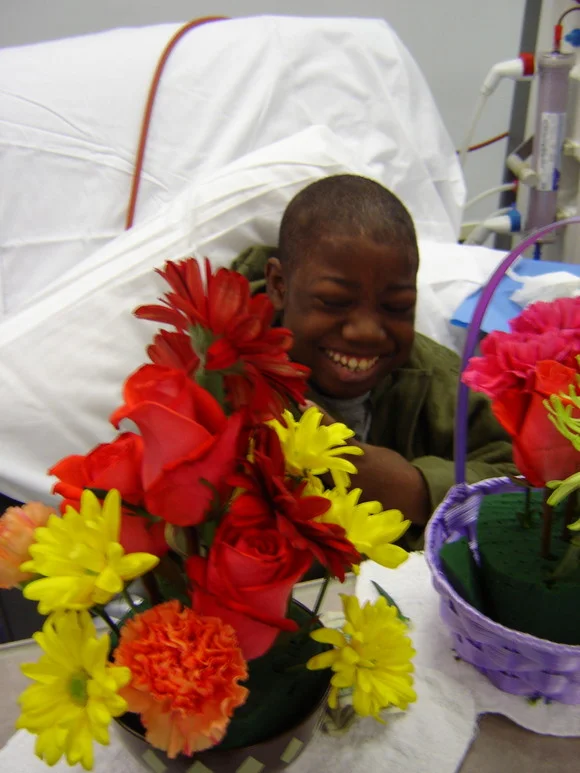Hospitalized children and adolescents
experience pain, fear, boredom, and isolation from peers
as well as almost complete isolation from the natural world
(whether they are hospitalized for a mental or physical illness).
Wonder Connection programming provides patients with engaging nature and science activities that help them feel like the curious, smart, and creative kids and teens that they are.
Activities and interactions are designed to:
bring patients joy
distract patients from pain and boredom
nurture their interest in science and build their science process skills
allow them to build relationships with caring adults as well as their peers (when they’re able to be around others)
connect them with nature and the outside world
Previous Evaluation results
(please email Katie for the latest evaluation data)
Positive Emotions: happy, proud, smart, joyful
o 100% of patients surveyed reported experiencing at least one positive emotion as a result of programming. One kid said "I'm having more fun than I had any day!"
Distraction from Pain, Discomfort, or Boredom:
o 100% of caregivers surveyed said that programming helped their child cope with boredom and pain. One parent wrote “For example, today Sam is smiling and interested in eating for the first time in many days, completely attributed to the volcano experiment!!!”
o 98% of caregivers surveyed said that their child seemed to experience less pain during programming. One parent said “My child was very upset after receiving a painful injection and was crying and I was having trouble consoling him. Katie walked in with a project for him to do and completely made him forget his pain.”
o 90% of patients surveyed said that HHTS programming helped them forget about and/or be distracted from pain or discomfort. Kids said “I didn't have to be worrying about wanting to go to my house” and "It distracts me from my pain."
Desire for more Science Programming
o 100% of patients surveyed wanted to participate in more science programming
o 100% of caregivers surveyed wanted their child to participate in more science programming (87% rated their response to this question as “Extremely/Absolutely”). One parent said “He has so much fun in the past doing projects that he asked if he could do another one this time when he was admitted into the hospital.”
94% of nursing staff surveyed wanted their patients to participate in more science programming
Research related to the benefits of Wonder Connection programming for hospitalized kids and teens (click here for bibliography).
Positive Emotions provide physical, mental, and learning benefits.
Studies have shown that positive emotions (which are a goal and result of WonderConnection programming) help encourage students’ enthusiasm for science and helps pediatric patients be more open to learning new information and to thinking creatively
Research by Barbara Fredrickson shows that positive emotions can undo the physiological effects of negative emotions.
Connection with nature
Studies have shown that interacting with natural objects can provide psychological and physiological benefits.
Research has shown that children in the stressful hospital environment improve when they have access to "positive, productive activities that allow the child's direct involvement in a variety of sensory experiences." (Jesse et al. 1986)
Additional findings have shown that multi-sensory nature experiences help hospitalized children cope emotionally with stress and that rehabilitation patients who physically interacted with plants experienced a significantly reduced recovery time after medical procedures (Jessee 1987) (Raanaas 2010).[1],[2]

